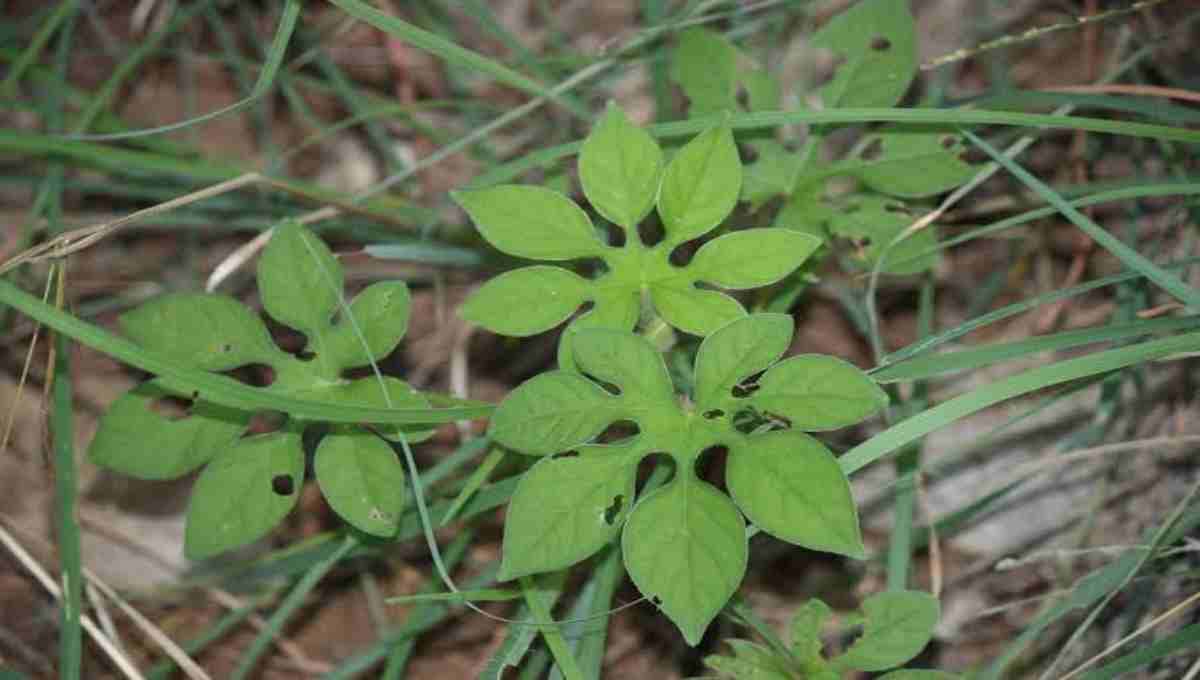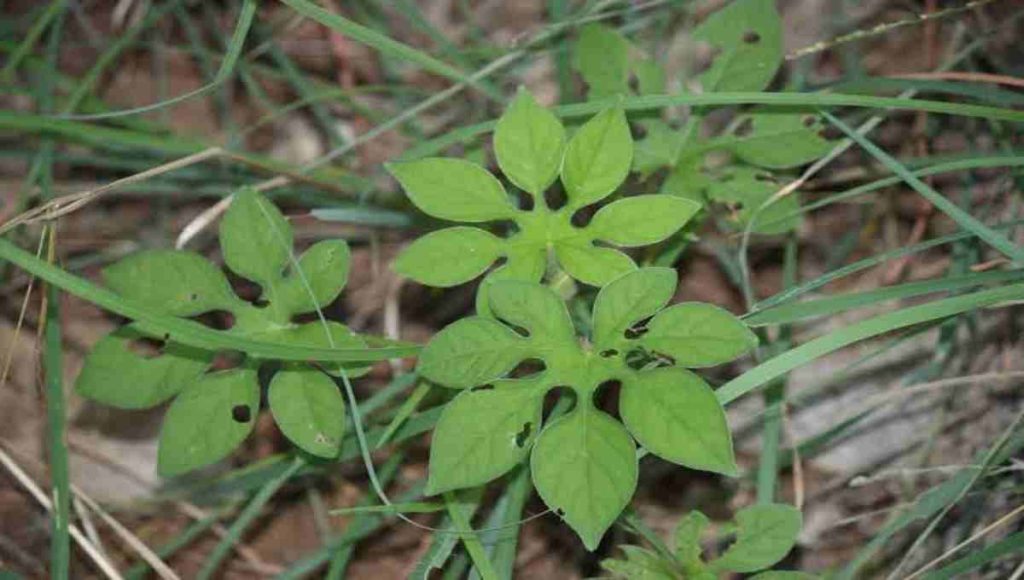
നീരും വേദനയും അകറ്റാൻ അത്ഭുത ഗുണമുള്ള പുലി ചുവടി Medicinal Benefits & Traditional Uses
നീരും വേദനയും അകറ്റാൻ അത്ഭുത ഗുണമുള്ള പുലി ചുവടി. വേദന അകറ്റുന്നതിനായിട്ട് നമുക്ക് ഒരു ചെടി ഉണ്ടെന്നു അറിയാതെ ഒത്തിരി പേരുണ്ട് അതുകൊണ്ടുതന്നെ നീരും വൈകിട്ട് വേദനയും അകറ്റുന്നതിനായിട്ട് നമുക്ക് ഈ ചെടി ഉപയോഗിക്കാം ഇതിന്റെ പേര് പുലി ചുവടി എന്നാണ് ഈയൊരു ചെടി കൊണ്ട് നമുക്ക് വളരെ എളുപ്പത്തിൽ തന്നെ മരുന്നുണ്ടാക്കി എടുക്കാൻ സാധിക്കും അതുപോലെ നമുക്ക് അരച്ച് ഉപ്പിന്റെ കൂടെ
ഇട്ടാലും അതുപോലെ ഇത് കഴിക്കുന്ന രീതിയിൽ ആക്കാനും ഒക്കെ വളരെ എളുപ്പമാണ് വളരെ പെട്ടെന്ന് ഉണ്ടാക്കിയെടുക്കാൻ പറ്റുന്ന ഒരു നല്ലൊരു ചെടിയാണിത് ഇത്രയും ഔഷധഗുണമുള്ളതാണെന്ന് അറിയാത്ത ഒത്തിരി ആളുകൾ ഉണ്ട് അതുകൊണ്ടുതന്നെ ഈയൊരു ചെടി എല്ലാവർക്കും ഇഷ്ടമാവുകയും ഈ ചെടിയുടെ ഗുണങ്ങൾ അറിയാതെ പോകരുത് അതുപോലെ ഈ ചെടി നമുക്ക് പറമ്പിലേക്ക് കാണുന്ന ഒരു ചെടിയാണ് അതുകൊണ്ടുതന്നെ ഈ ചെടി നമുക്ക് വളരെയധികം ഉപകാരപ്പെടുന്ന ഒരു

ചെടിയാണ് ഇത് നമുക്ക് ചെടിച്ചട്ടിയിൽ ആണെങ്കിലും വളർത്താൻ സാധിക്കും പഞ്ഞി പോലുള്ള ഒരു ചെടിയാണ്. തയ്യാറാക്കുന്ന വിധം നിങ്ങൾക്ക് ഇഷ്ടമായാൽ ചാനൽ സബ്സ്ക്രൈബ് ചെയ്യാനും ലൈക് ചെയ്യാനും ഷെയർ ചെയ്യാനും മറക്കരുത്. ഇതിന് ഒരു പുലിയുടെ കാല് പോലെയാണ് ഇതിന്റെ ഷേപ്പ് ഉള്ളത് അതുകൊണ്ടുതന്നെ ഈയൊരു ചെടി എല്ലാവർക്കും കാണുമ്പോൾ തന്നെ മനസ്സിലാകും നല്ല എളുപ്പത്തിൽ കണ്ടുപിടിക്കാൻ പറ്റുന്ന ഒരു ചെടി കൂടിയാണ്.
Wound Healing & Skin Care
- Crushed leaves applied topically to cuts, wounds, pimples, eczema, and boils due to antibacterial, anti‑inflammatory, and astringent properties
2. Pain Relief & Anti-inflammatory
- Used for rheumatism, arthritis, headaches, and general aches as an herbal analgesic. Extracts have shown measurable pain‑reducing effects in lab tests .
3. Antimicrobial / Antifungal
- Leaf and stem extracts demonstrate antimicrobial and antifungal action—helpful in treating skin infections including acne and fungal lesions .
4. Digestive & Anti-diarrheal
- Traditionally used to alleviate diarrhea and stomach discomfort, supporting digestive health .
5. Respiratory & Hypnotic Uses
- Employed in folk preparations for coughs, colds, bronchial spasm relief, and insomnia
6. Antidiabetic Potential
- Traditional use includes managing blood sugar; some extracts show anti-diabetic activity in preliminary studies m
7. Other Uses
- Used in tribal medicine for snake/dog bites, fever, dropsy, venereal disorders, and even tumors in regions like Kerala, Maharashtra, Andhra Pradesh, and Bangladesh
⚠️ Safety & Cautions
- Toxicity risk: Contains alkaloids (ergoline, lysergamide); ingestion can cause vomiting, hallucinations, drowsiness—not recommended for internal use without proper guidance
- Topical use only—avoid ingestion without expert advice.
✅ Usage Tips (Traditional Methods)
- Leaf paste: Crush and apply on skin conditions (pimples, sores, wounds).
- Leaf infusions: Used for respiratory relief or mild sedation.
- Poultices: Applied to muscles and joints for pain and inflammation.
- Decoctions: In small doses for digestive and respiratory ailments (under careful guidance).
🧪 Research Insights
- Analgesic tests: Leaf extracts significantly reduced pain in animal and lab models
- Cytotoxic activity: Some evidence suggests leaf extracts may have cancer cell inhibitory effects (e.g. against HepG2 cell line)
📝 Bottom Line
Ipomoea pes‑tigridis is a powerful medicinal vine with a rich traditional use in treating wounds, pain, skin issues, respiratory troubles, digestive problems, and more. While promising, its internal use demands caution due to toxicity—and scientific validation is still in early stages.
Would you like help with preparing a safe topical paste, growing this vine at home, or understanding dosage guidelines?
